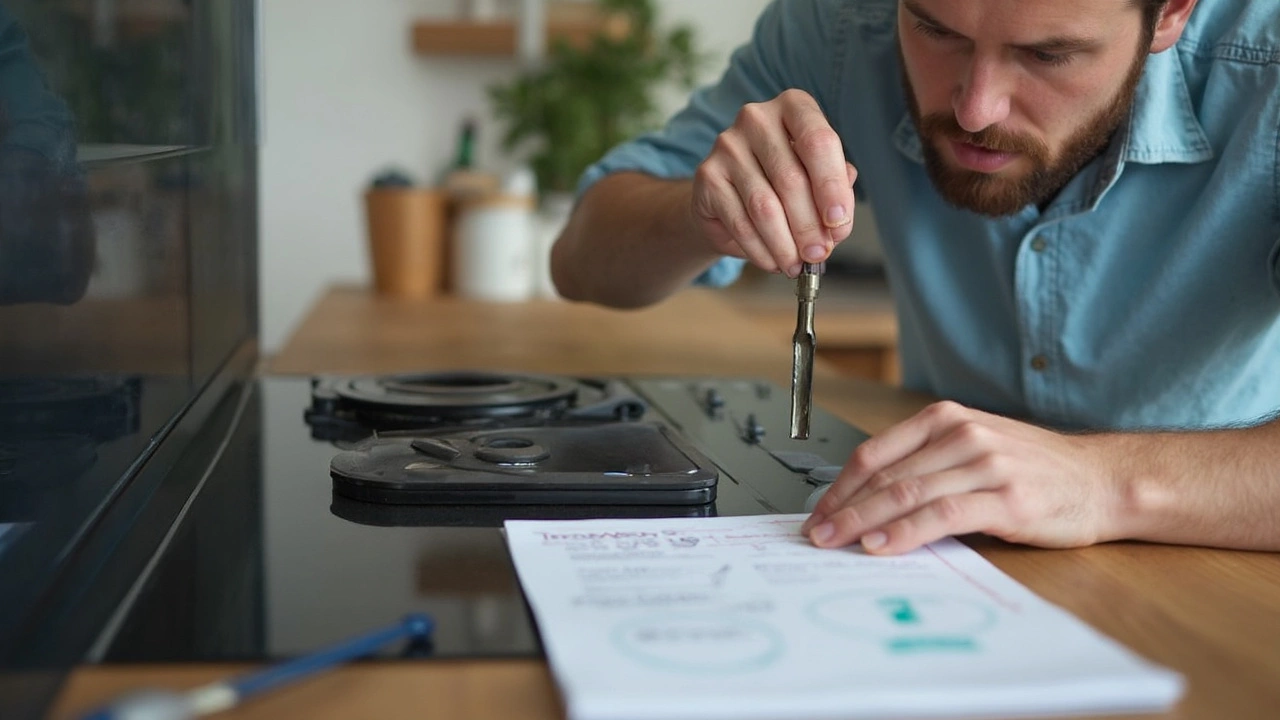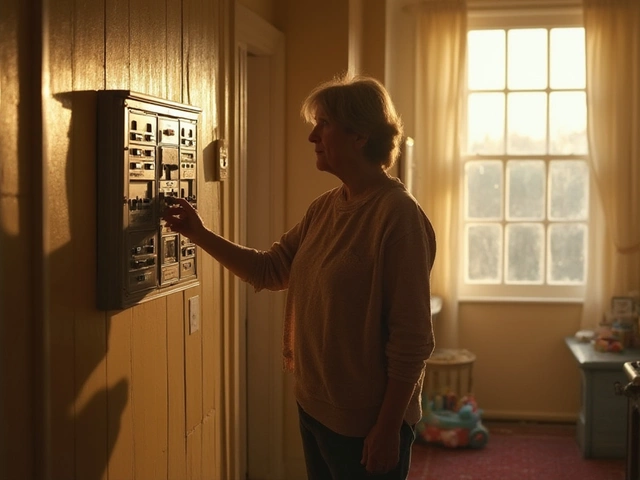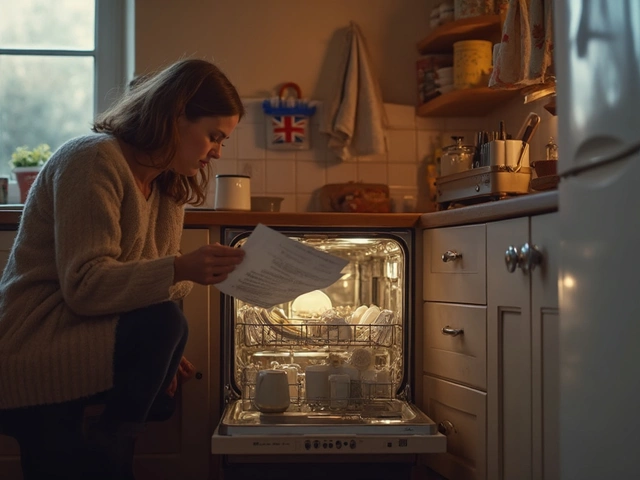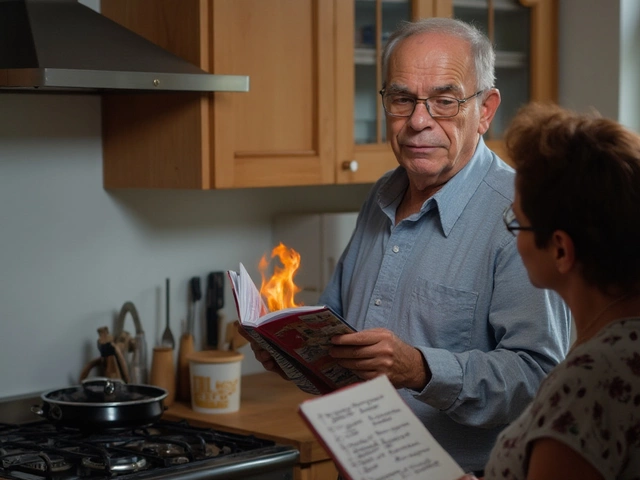Electric stoves are a total game-changer—until they decide not to play nice. Picture this: you’re ready to make dinner, but your stove either won’t heat up or can’t hold the right temperature. Annoying, right? Turns out, these two problems—burners not working and ovens not staying at the correct temperature—are the most common issues people run into with electric stoves.
Most of the time, these problems start small. You might notice a burner that heats slowly or the oven suddenly baking your pizza unevenly. Ignoring small clues like cold spots can lead to bigger headaches down the road, so knowing the basics can help save money and time. The good news? Simple steps like checking the coil, cleaning contacts, or calibrating the oven can fix a lot of these common hiccups at home.
You don’t need to be an expert to spot these red flags. Sometimes the issue is as basic as a loose wire or a tripped breaker. A quick peek underneath the burner or inside the oven door might reveal the culprit—a burnt-out coil, a broken sensor, or even a stuck knob. There’s no need to panic before you get to the bottom of it. Let’s break down what makes these problems tick and how you can get ahead of stove breakdowns.
- Heating Elements Not Working
- Oven Not Reaching Set Temperature
- When to Replace vs. Repair
- Simple Troubleshooting Tips
- Preventive Maintenance for Longer Life
Heating Elements Not Working
If your electric stove won't heat up, the most likely culprit is a problem with the heating element. This is super common, and honestly, it throws a wrench into daily cooking faster than anything else. The heating element is the coil or flat surface that gets hot and cooks your food. If one or more burners stay cold, or you notice uneven heating, it’s time for a closer look.
The first thing to check is whether the burner fits snugly into its socket. Sometimes these coils get loose or gunky, so lift it out and plug it back in. Still cold? Swapping a non-working burner with a working one (from the same stove) can tell you if the problem is the element itself or the socket. If the good burner works in the spot, it’s likely just that element is fried.
For glass top stoves, things work a bit differently. Here, heating happens underneath, and you can’t really swap elements. If your glass stove top won’t heat, it usually means a hidden element has burnt out or the connection is faulty. Either way, don’t force a repair if you aren’t comfortable—some jobs are best left to a pro.
Here are a few main causes of heating element problems:
- Busted or burnt-out coil: You’ll see visible damage or discoloration.
- Loose or corroded connections: Check for gunk or rust at the sockets.
- Faulty infinite switch: This controls power to the element; if it's bad, the burner won’t respond.
- Blown fuse or tripped breaker: Sometimes the whole stove stops working, not just one spot.
Take a look at this quick table to spot the most frequent symptoms and what they usually mean:
| Symptom | Possible Cause | DIY Fix? |
|---|---|---|
| Burner won’t heat at all | Dead element, wiring issue, or blown fuse | Replace element or check fuses |
| Burner heats unevenly | Old or warped coil, bad socket | Replace coil or clean socket |
| All burners dead | Main power or breaker problem | Check breaker box |
If your electric stove problems start picking up steam, don’t ignore obvious signs. Regularly cleaning the contact points and checking for loose connections now and then can save you from cold dinners and hefty repair bills later. Remember, electricity is nothing to mess with—if you spot burnt smells, pops, or sparking, turn the power off and call a pro.
Oven Not Reaching Set Temperature
If you set your oven to 400°F but the food comes out half-baked, you’re not alone. This issue pops up a lot with electric stoves. The main culprit? A faulty temperature sensor or heating element. Both of these parts work together to keep the oven at the right heat, and if one goes bad, your meals take the hit.
Let’s talk about the temperature sensor. This small rod inside the oven constantly tracks the heat. If it gets grimy, bent, or just stops working, the oven can’t “tell” how hot it is. That means it’ll shut off the heat too soon or keep running when it shouldn’t. Cleaning the sensor or, if that doesn’t help, swapping it out is an easy fix for some models.
Heating elements are another common issue. If the top or bottom element isn’t glowing or has visible damage, it likely needs replacing. A broken element can cause the oven to stay lukewarm or create uneven baking zones. Swapping a heating element often involves just unscrewing and unplugging it, but safety first—always turn off the power at the breaker box to avoid any mishaps.
Old or poorly sealed oven doors leak heat, making the oven work harder to reach and keep the set temperature. Check for warped doors or squished gaskets. These gaskets can be replaced without fancy tools and usually click or slide right into place. Also, a quick check with a cheap oven thermometer helps confirm if the problem is real or if your oven’s just a little inaccurate by design (most can be off by 10–20°F, which isn’t a big deal for everyday cooking).
When you start dealing with temperature issues, keep this electric stove problems tip in mind: If standard troubleshooting doesn’t help, your stove’s control board might be the issue. That’s the circuit brain telling the oven how hot to get—if that’s failing, a pro repair is probably the way to go.
- Check the oven sensor and heating elements for damage or gunk.
- Look for door seal problems and replace as needed.
- Use an oven thermometer to double-check your oven’s accuracy.
- If basic fixes don’t work, consider calling a repair tech for deeper issues.

When to Replace vs. Repair
It’s the question everyone dreads when their electric stove goes on strike: Should you bother fixing it, or just get a new one? Before you shell out cash, think about a few things. Age, cost to repair, and your stove’s symptoms all matter. Let’s keep it simple—here’s how smart folks make the call.
First, check the age. Most electric stoves last about 13 to 15 years if you take care of them. If yours is getting close to that, and you’ve already fixed it once or twice, replacement can actually save money in the long run. Parts for older models are harder to find, and labor costs add up quick.
Then there’s repair cost. There’s a basic rule: If the repair costs more than half of what a brand new stove would, replacement is usually smarter. Here’s some actual data for what you can expect to pay today:
| Repair Type | Average Cost (USD) | Notes |
|---|---|---|
| Heating Element Replacement | $150 - $300 | Common, but can add up if you fix more than one |
| Thermostat Sensor Fix | $100 - $250 | Price includes labor and parts |
| Main Control Board | $200 - $400 | Often better to replace stove if this fails |
| Brand New Electric Stove | $450 - $1,200+ | Entry-level to mid-range models |
Another tip: watch for repeated breakdowns, weird electrical smells, or issues with the digital controls. Persistent issues mean there’s probably a deeper problem, and you don’t want to keep throwing money at a lemon.
Still not sure? Answer these:
- Is your stove older than 10 years?
- Are repairs getting close to half the price of a new stove?
- Are new features (convection, smart controls, better energy savings) something you’d actually use?
If you said yes to two or more, start browsing for a replacement. If not, a repair could make sense for now. Remember, a electric stove problem that’s simple and cheap to fix—like a single burner coil—usually isn’t the end of your stove. But big, expensive fixes on an old stove? Not really worth your cash.
Simple Troubleshooting Tips
If your electric stove is acting up, there’s a good chance you can figure out what’s wrong before calling a repair tech. Most of the time, a few basic checks can get your stove back in shape.
- First things first—make sure your stove is actually plugged in and that the circuit breaker hasn’t tripped. Sounds obvious, but it happens more than you’d think.
- If a burner won’t heat, swap it with a working one. If the problem follows the burner, then that coil is probably shot and needs replacing. But if the other slot doesn’t work either, the socket or the wiring might be bad.
- For ovens that won’t reach the right temp, try an oven thermometer. Set the oven to 350°F, and see where it lands. If it’s way off, your temperature sensor could be faulty, or you might need to recalibrate your oven.
- Look for obvious signs—burn marks, frayed wires, or that burnt metal smell—especially around connections or the back panel. If you spot something that looks unsafe, unplug the stove before poking around any further.
- Clean the connections on your burners and the socket they plug into. Grease or grime can mess up the connection and stop your stove from working right. A quick scrub can sometimes make all the difference.
Plenty of electric stove problems are the result of a simple oversight or a small part that’s easy to swap out. Sticking to the basics—checking power, swapping parts, and cleaning—is the fastest way to zero in on the issue. If these fixes don’t work, then you’ll know it’s time to call in a pro.

Preventive Maintenance for Longer Life
Electric stoves can last over a decade, but only if you take care of them. Skipping maintenance? That's how simple issues turn into expensive fixes. The secret is doing a handful of easy tasks every so often. Consistency keeps trouble away and saves cash on unexpected appliance repairs.
Here’s what you can do to keep your stove in top shape:
- Unplug Before Cleaning: Always disconnect the stove before you start. Safety first—no exceptions.
- Clean Burner Coils Regularly: Grease and food mess can cause uneven heating or even damage. Wait till the coils are cool, then wipe them with a damp cloth. No harsh scrubbers or chemicals—those can wreck the finish.
- Check Drip Pans: Pop out drip pans every month and give them a good wash. Replace if they’re corroded or bent.
- Inspect and Tighten Plugs & Connections: Loose plugs can cause burners to flicker or go dead. Make sure everything’s fitting tight and there’s no visible damage.
- Control Knobs and Switches: If knobs feel loose or wobbly, remove and clean around them. Food crud can mess with electrical contacts.
- Vacuum Under and Behind: Lint, dust, or pet hair can block airflow. Use a handheld vacuum to clean these hidden spots every few months.
- Calibrate the Oven Temperature: If your oven temperature seems off, use an oven thermometer to check accuracy. Adjust as needed using the manual—it makes a bigger difference than you’d think.
Keeping up with these basics doesn’t take long, and it pays off. A 2023 survey by a major appliance repair company showed that people who did monthly cleaning had stoves that lasted, on average, 4 years longer than people who skipped it. That’s real money saved and a lot less hassle.
| Task | How Often | Time Needed |
|---|---|---|
| Clean burner coils | Monthly | 5 minutes |
| Wash drip pans | Monthly | 10 minutes |
| Inspect cords/connections | Every 3 months | 3 minutes |
| Vacuum behind stove | Every 6 months | 15 minutes |
| Calibrate oven temp | Yearly | 10 minutes |
Regular electric stove problems don’t happen out of nowhere. Stick to this plan, and breakdowns will pretty much be a thing of the past.





